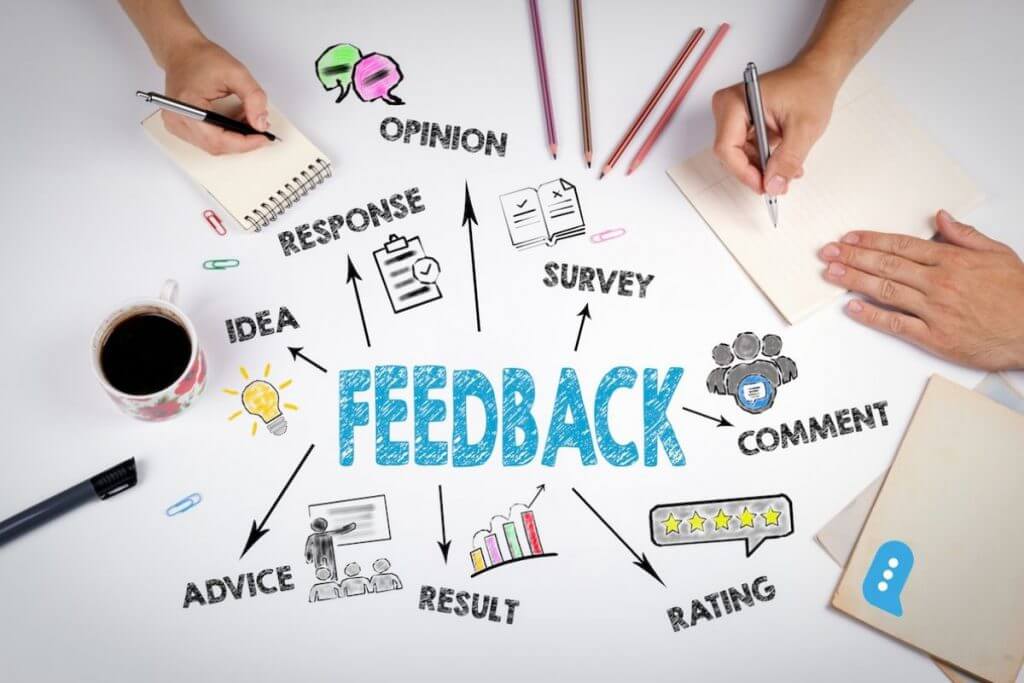
Customer Feedback: Your Secret Weapon for Business Success
Table of Contents
Why Customer Feedback is Your Secret Weapon
Imagine navigating a ship through stormy seas with only a map and no compass. You might have a destination in mind, but without a clear sense of direction, you’re likely to get lost! Running a business without paying attention to customer feedback is a lot like that.
Customer feedback acts as your compass, guiding you towards success. It reveals what your customers love, what frustrates them, and what they yearn for. It’s like having a window into their minds, allowing you to understand their needs, preferences, and pain points. Armed with this knowledge, you can tailor your products, services, and customer experience to precisely meet those needs.
Types of Feedback: Knowing What to Look For
To truly harness the power of feedback, it’s essential to recognize its diverse forms. Here’s a breakdown of the different types of feedback you might encounter:
Direct Feedback: Straight from the Source
This is the feedback that customers actively and intentionally provide. It’s usually clear, specific, and easy to gather. Here are some common examples:
- Surveys: Online questionnaires, like those created with Sogolytics, allow you to collect feedback from a large number of customers quickly. These tools often include customizable templates, advanced reporting, and even customer experience management platform to help you gather and analyze valuable customer insights.
- Example: A satisfaction survey asking customers to rate their experience on a scale of 1-5 and provide detailed comments.
- Feedback Forms: Forms embedded on your website or available at your physical location, providing space for customers to share their thoughts and suggestions.
- Example: A contact form with fields like “What did you like best?” and “How can we improve?”
- Emails: Customers might email you with praise, complaints, or questions.
- Example: A customer emailing to express dissatisfaction with a delayed delivery.
- Phone Calls: Direct conversations with your customer service team, where customers can report issues, provide feedback, or seek assistance.
- Example: A customer calling to commend a helpful staff member.
- In-Person Conversations: Face-to-face interactions with customers, where they share their experiences and opinions.
- Example: A customer telling a cashier how much they enjoyed a specific product.
- Focus Groups: Moderated group discussions with customers, allowing for in-depth exploration of specific topics.
- Example: A focus group convened to discuss a new product prototype.
- Usability Testing: Observing customers as they interact with your product or service to identify any usability issues.
- Example: Watching customers navigate your website to see if they can easily find what they’re looking for.
Indirect Feedback: Reading Between the Lines
This type of feedback is more subtle and requires careful observation and analysis. It often reflects customer behavior and choices rather than explicit comments. Here are some examples:
- Website Analytics: Data from tools like Google Analytics, revealing how visitors interact with your website. Integrating this data with a platform like Sogolytics’ SogoCX can provide deeper insights into customer behavior in the context of their feedback.
- Example: A high bounce rate on a product page might suggest that the page is confusing or unappealing.
- Social Media Engagement: Monitoring likes, shares, comments, and mentions on social media platforms can reveal valuable insights into customer sentiment.
- Example: A sudden increase in negative comments on your Facebook page could indicate an issue with your product or service.
- Sales Data: Tracking sales trends for different products or services can highlight customer preferences and identify areas for improvement.
- Example: A decline in sales of a particular product might suggest that it’s no longer meeting customer needs.
- Customer Churn: The rate at which customers stop doing business with you, which can indicate underlying dissatisfaction.
- Example: A high churn rate could indicate that customers are unhappy with your service or that your competitors are offering a better alternative.
- Product Returns: Analyzing the number of product returns can reveal quality issues or mismatches between customer expectations and product descriptions.
- Example: A high return rate for a specific item might point to a quality issue or a need for a more accurate product description.
- Customer Support Tickets: Tracking the number and types of support requests can highlight areas where customers need more assistance or where your product or service may be falling short.
- Example: A surge in support tickets related to a specific feature could indicate a bug or unclear instructions.
How to Gather Customer Feedback Effectively
Now that you understand the importance and types of feedback, let’s explore some effective methods for gathering it:
Surveys: Quick and Easy Insights
Surveys are a fantastic way to quickly collect feedback from a large group of customers. Online tools like SurveyMonkey or Google Forms can be used to create and distribute surveys via email, social media, or your website. 1 For more robust features and in-depth analysis, consider a dedicated survey platform like Sogolytics. Their SogoSurvey an online survey tool offers a user-friendly interface and powerful analytics, helping you create professional surveys, track responses, and generate insightful reports.
Keeping it Short and Sweet
Respect your customers’ time by keeping your surveys concise and focused. Ask only the most important questions to avoid survey fatigue.
Offering Incentives
A small incentive can go a long way in encouraging participation. Consider offering a discount, a freebie, or entry into a prize draw as a thank you for their time.
Feedback Forms: Website Goldmines
Strategically place feedback forms on your website, especially on key pages like your contact page, product pages, and checkout page. This allows customers to easily share their thoughts while actively interacting with your brand.
Social Media: The Power of Public Opinion
Social media platforms are teeming with customer opinions. Actively monitor your social media channels for mentions, comments, and reviews. Engage with your audience, respond to their feedback, and use social listening tools to track what people are saying about your brand.
Reviews: Online Reputation Management
Online reviews on platforms like Google My Business, Yelp, and TripAdvisor can significantly impact your business’s reputation. Encourage satisfied customers to leave positive reviews and address negative reviews promptly and professionally.
Turning Feedback into Actionable Steps
Gathering feedback is only the beginning. The real magic happens when you translate that feedback into concrete actions to enhance your business.
Analyze the Data
Once you’ve collected a substantial amount of feedback, it’s time to analyze the data. Look for recurring patterns and trends in the responses. What are the most frequent compliments and complaints? What areas require the most attention?
Implement Changes
Based on your analysis, implement changes to address the feedback you’ve received. This could involve anything from updating your website design to improving your product offerings or revamping your customer service approach.
Show Your Appreciation
Always thank your customers for their feedback, even if it’s negative. Let them know you value their honesty and are taking their suggestions seriously. This demonstrates your commitment to providing an exceptional customer experience.
Reap the Rewards of Happy Customers
By actively seeking and responding to customer feedback, you’re building a business that truly delights its customers. Happy customers are more likely to become repeat customers, spread positive word-of-mouth referrals, and ultimately contribute to your business’s success. So, make customer feedback an integral part of your business strategy, and watch your business flourish!
Use Customer Feedback to Make Customers Feel Valued
When you actively solicit customer feedback, you’re sending a powerful message: “Your opinion matters to us.” This fosters a sense of value and appreciation, strengthening the customer relationship. By closing the feedback loop – sharing how customer feedback has led to specific changes – you further reinforce their importance and build trust. This increased engagement can lead to more sales, positive reviews, and valuable recommendations.
Remember: Avoid using “no-reply” emails in your customer communications. Instead, use a real email address to encourage open dialogue and show that you’re genuinely receptive to feedback.
FAQs:
1. What if I get negative feedback?
Don’t fear negative feedback! It’s a valuable opportunity to learn and grow. Respond gracefully, apologize for any inconvenience caused, and take steps to address the issue.
2. How often should I collect customer feedback?
The ideal frequency depends on your business. You can send out surveys quarterly, have feedback forms readily available on your website, and continuously monitor social media and review platforms.
3. What’s the best way to respond to online reviews?
Respond to all reviews, both positive and negative, in a timely and professional manner. Thank customers for their positive feedback and address negative feedback constructively, offering solutions and demonstrating your commitment to customer satisfaction.








